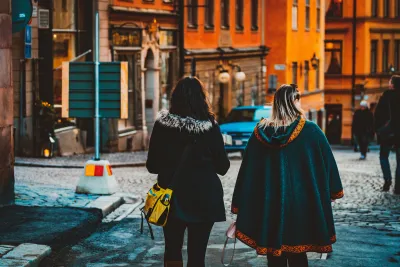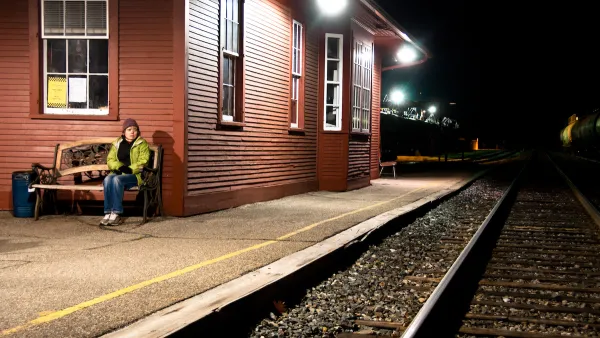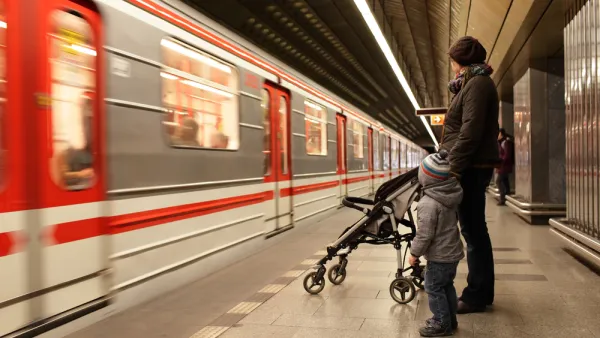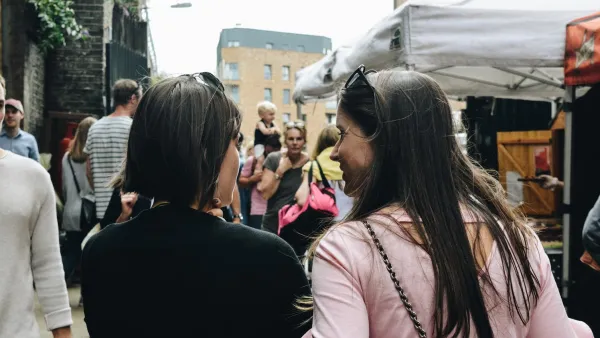Urban spaces and transportation system are largely designed and managed by men, but cities are starting to recognize the unique challenges women and children face.

In a piece in Forbes, Eva Epker argues that “cities that were designed for men’s needs and conveniences. They were not designed for women or even designed by women.”
In general, according to UN Women, almost 9 out of 10 women in cities around the world feel unsafe in public spaces – and, as Dolores Hayden argued in 1980, cities have been built, literally and figuratively, on the idea that men move into town and women stay home.
Pointing to the low number of women in the architecture and planning fields and local governments, Epker writes that “Due to this male dominance and subsequent male bias, women’s needs aren’t represented equally in either in city plans or realities: regardless of whether those women stay at home or work elsewhere.”
Epker uses examples from transportation — women are more likely to walk and have variable schedules to account for household tasks and childcare, among other things — to show how public transit and transportation infrastructure are often not geared to women’s and children’s needs.
Making cities safer and more accessible for women and children doesn’t always require massive change. In Stockholm, Sweden, where women were more likely to be injured on icy sidewalks, the city began prioritizing plowing sidewalks and cycle tracks to make conditions safer for pedestrians — “decreasing the number of accidents by 50% in the process without any extra charge to the municipality.”
FULL STORY: Cities Are Designed For Men’s Convenience - Not For Women’s Health

National Parks Layoffs Will Cause Communities to Lose Billions
Thousands of essential park workers were laid off this week, just before the busy spring break season.

Retro-silient?: America’s First “Eco-burb,” The Woodlands Turns 50
A master-planned community north of Houston offers lessons on green infrastructure and resilient design, but falls short of its founder’s lofty affordability and walkability goals.

Delivering for America Plan Will Downgrade Mail Service in at Least 49.5 Percent of Zip Codes
Republican and Democrat lawmakers criticize the plan for its disproportionate negative impact on rural communities.

Test News Post 1
This is a summary

Test News Headline 46
Test for the image on the front page.

Balancing Bombs and Butterflies: How the National Guard Protects a Rare Species
The National Guard at Fort Indiantown Gap uses GIS technology and land management strategies to balance military training with conservation efforts, ensuring the survival of the rare eastern regal fritillary butterfly.
Urban Design for Planners 1: Software Tools
This six-course series explores essential urban design concepts using open source software and equips planners with the tools they need to participate fully in the urban design process.
Planning for Universal Design
Learn the tools for implementing Universal Design in planning regulations.
EMC Planning Group, Inc.
Planetizen
Planetizen
Mpact (formerly Rail~Volution)
Great Falls Development Authority, Inc.
HUDs Office of Policy Development and Research
NYU Wagner Graduate School of Public Service





























